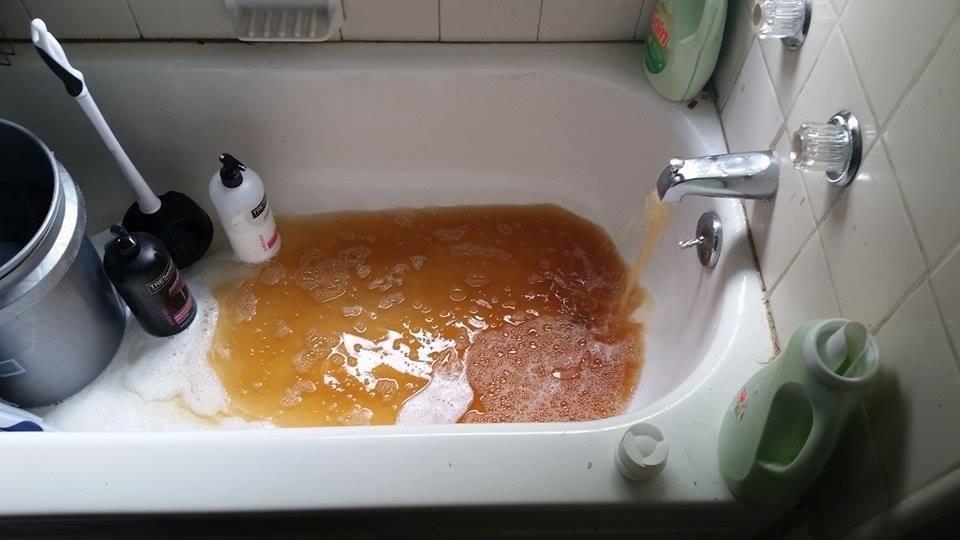The pictures of the drinking water in Flint, Michigan, are enough to make anybody sick. It comes out of some taps a brownish, orange. It is a toxic cocktail of lead and other dangerous metals.
On Tuesday night, the governor tried to make amends. “I’m sorry and I will fix it,” said Gov. Rick Snyder.
His apology comes much too late for the children of Flint.
They’ve been drinking water with massive levels of lead since April 2014. That’s when the state decided to save money by switching Flint’s water supply from Lake Huron to the polluted Flint River.1
Government officials claimed for almost two years that the water was perfectly safe. It was all lies.
Lead is a potent neurotoxin. It causes brain damage. Kids are more susceptible than adults. There are more than 8,000 children in Flint. Many of them now face a permanently lower IQ, ADHD, and other problems.2
The debacle in Flint shows you can’t trust the government to keep your water safe. You need to do it yourself.
Recommended for You: The Anti-Aging Secret You Haven’t Heard of… Yet
It’s a tiny compound found in the skin of some fruits. But it packs quite the punch. This antioxidant is so powerful that one of America’s most trusted experts recently declared on national television, “It’ll help you live longer.”
When stacked up against the world’s top anti-aging supplement, researchers concluded that this “new” antioxidant is “more potent” when it comes to keeping the brain young in animals. So what is it…how can you benefit…and even better, how can you ramp up its power even more? That’s what you’ll discover HERE.
Here’s what to do to make sure your water is OK to drink:3
- Check the Environmental Working Group’s Drinking Water Database
This watchdog group maintains a list of water-quality reports searchable by zip code. Click here to access it.
The EWG highlights chemicals that are above the legal limit. It also reveals those that may not be illegal, but still cause for concern.
- Check the EPA’s Water Watch Program
Yes, the very government that brought us the Flint crisis runs this program. But the information can still be revealing. Eighteen states participate in the program. It is a searchable database of water-quality violations, health hazards, and enforcement actions. Click here to access it.
- Test Your Water Yourself
Let’s face it: The only way to know for sure your water is safe is to have it tested yourself. Contact the Safe Drinking Water Hotline by calling 1-800-426-4791. It can connect you to local water-testing company. Prices vary, but a comprehensive test that includes lead and other heavy metals is generally about $100.
Even if your water checks out, it makes sense to use a home filter. Your water supply could become contaminated at any time. A home filter provides a layer protection.
The least expensive option is a carbon filter. These are the kind that fit atop a container and filter the water as you pour. They can be as cheap as $10. Some are designed to remove lead and some are not. You need to check with the manufacturer to make sure.
The most effective filter is a system that combines carbon filtration with reverse osmosis. These systems fit under the sink. They remove most contaminants and cost around $200.
The Environmental Working Group has water filter buying guide to help you decide what you need. Click here to access their guide.4
In Good Health,

Angela Salerno
Executive Director, INH Health Watch
Like this Article? Forward this article here or Share on Facebook.
References:
1http://www.usatoday.com/story/news/nation-now/2016/01/19/michigan-flint-water-contamination/78996052/
2http://www.thetakeaway.org/story/drinking-water-and-what-else/
3http://www.takepart.com/article/2014/11/17/heres-how-find-out-if-your-your-drinking-water-safe
4http://www.ewg.org/research/ewgs-water-filter-buying-guide
Image credit: Mlive.com

